Little-Known Traditional Japanese Cuisine
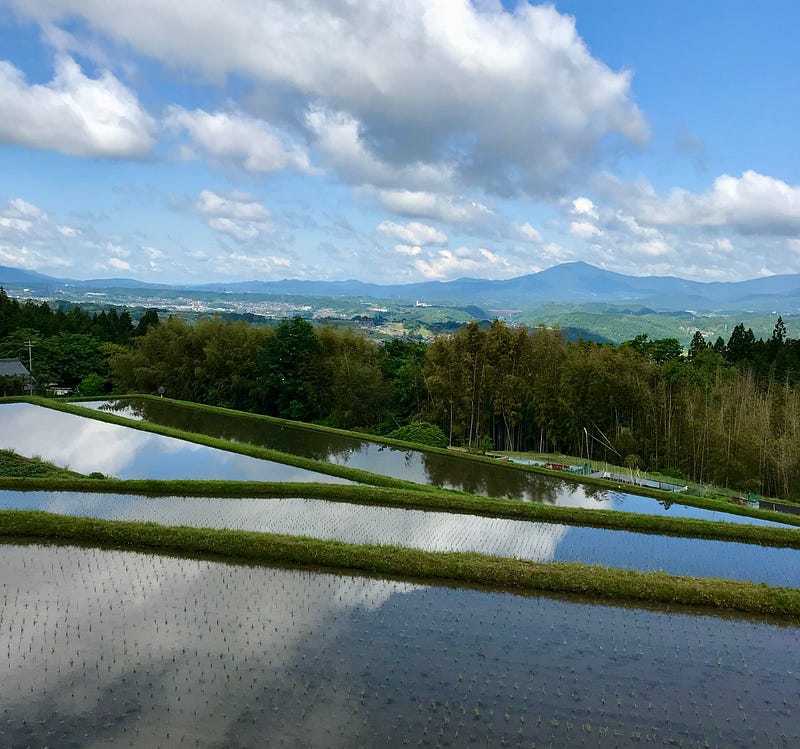
In the halcyon days before the coronavirus pandemic halted all inbound travel to Japan, I was blessed to take curious foreigners on hiking tours through rural Japan. One favorite route was the Nakasendo Way, 中山道, “the way through the mountains.”
The Nakasendo Way and the Tokaido were the two roads that linked Kyoto to Edo (Tokyo) during the Edo Era (1603–1867). Feudal lords were required to maintain one residence in Edo, where their wives and children lived, and another in their home province. By order of the Tokugawa shoguns, they had to alternate years spent in each locale.
To support this enforced travel, post towns were created at fairly regular intervals along these routes. These towns supplied the lords and their large entourages, as well as other travelers, with lodging, meals, straw sandals, and porters and horses for hire.
In one such former post town, I experienced a quite unexpected culinary delight.
Shinchaya Inn

It was always a joy to step into the entranceway at Shinchaya, 新茶屋, “New Tea House.” The inn is run by two generations, and they are the kindest and most welcoming people you can imagine.
The elderly father, now in his 80s, grows the rice and vegetables that are served in their meals. He also forages for wild vegetables and other delights, and hunts wild boar.
After my guests and I take turns in the bath and change into our yukatas, we are ready for our 6 pm dinner in the dining room. The meal is a feast, laid out on low tables in the spacious tatami room.
Exotic Foods
Let me preface this by saying I do not consider myself an adventurous eater. Yet, I have tried a few foods that are nothing like what I ate growing up in northern Virginia.
Years ago, I tried grilled raccoon, squirrel, and possum when visiting a friend who was keen on surviving in the wild for months at a time.
My favorite dish when I lived in Hong Kong in my early 20s was minced pigeon, not something I would consider ordinary fare.
In Japan, I’ve dined on sea cucumber, jellyfish, ray, and, on numerous occasions, raw blowfish, fugu-sashimi. Raw blowfish is rubbery, nearly tasteless, and leaves your mouth feeling a little tingly.
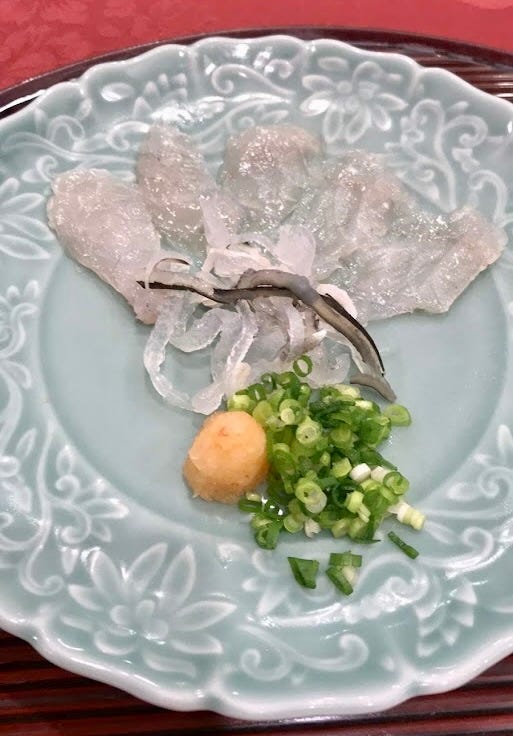
I have had raw chicken, tori-sashi, a specialty of Kagoshima, my adopted home in southern Kyushu. I had to politely refuse, though, when a farmer offered me a plate with raw chicken liver, heart, and gizzard.
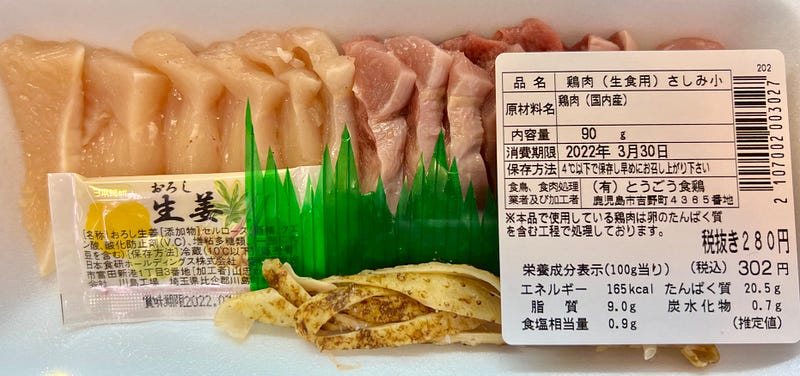
I’ve eaten raw egg over rice (not a fan) and fermented, slimy soybeans called natto. That highly nutritious food took me eight years to get used to, but now I actually choose to eat it on occasion.
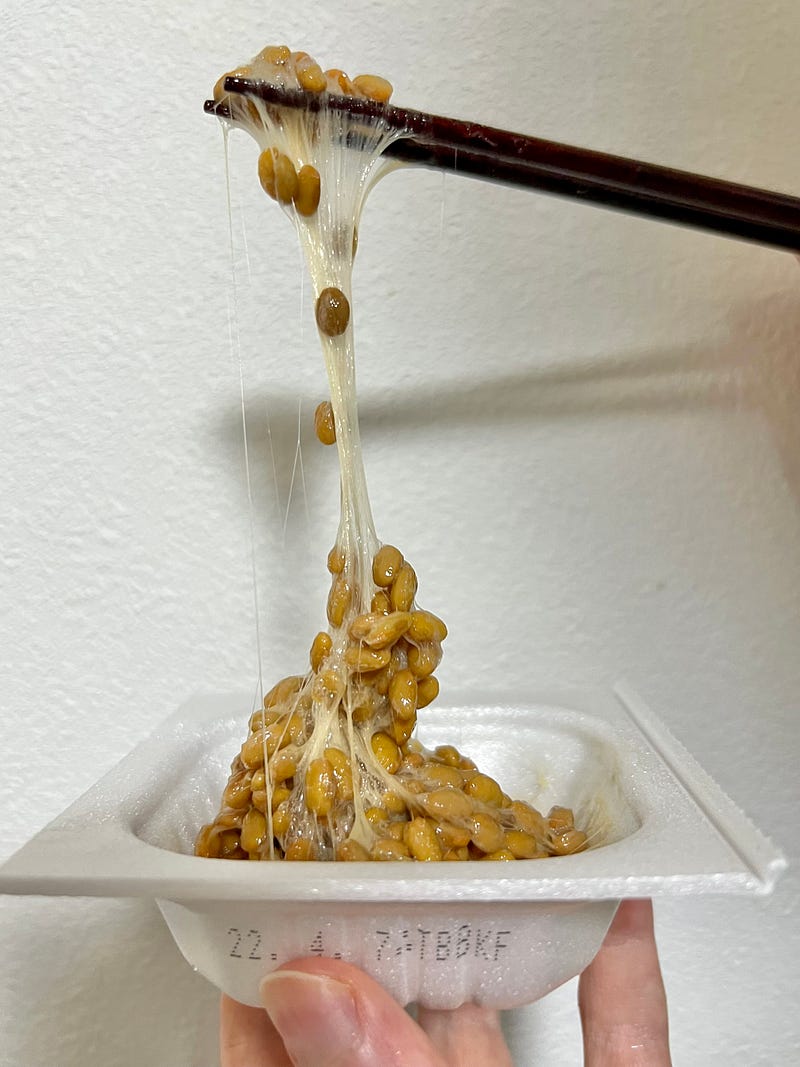
I have partaken of fish heads, served at a restaurant near the Ise Grand Shrine where the former emperor has eaten.
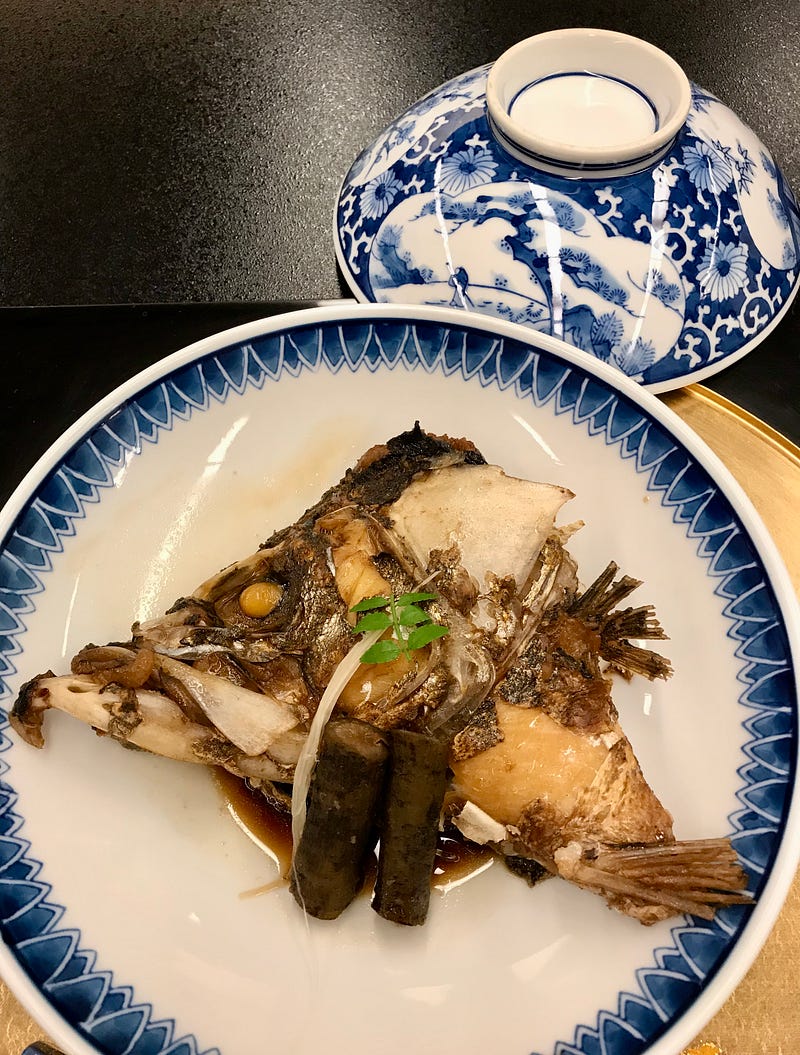
Along with raw chicken, another southern Kyushu delicacy that is also found in Nagano and other areas of the country is raw horse. Yes, I have eaten it.
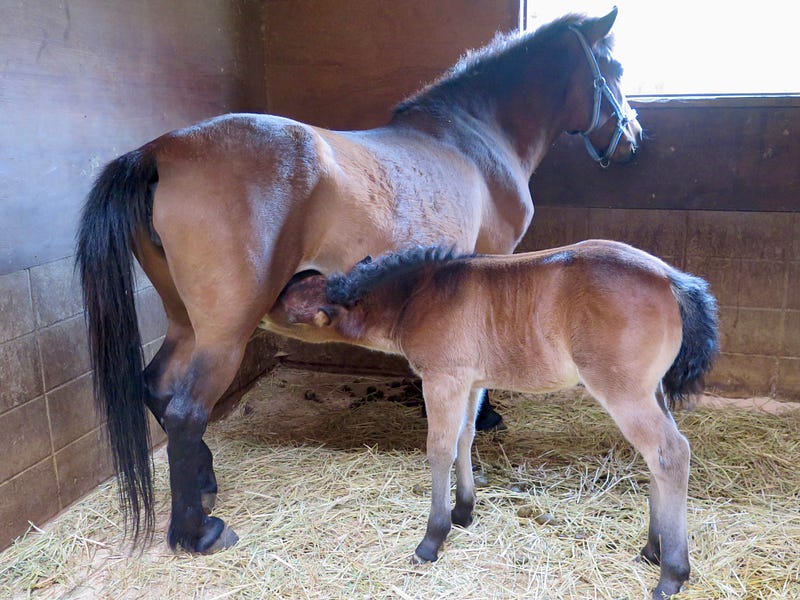
But none of those exotic dishes quite prepared me for what came with my beautiful dinner at Shinchaya.
Dinner at Shinchaya
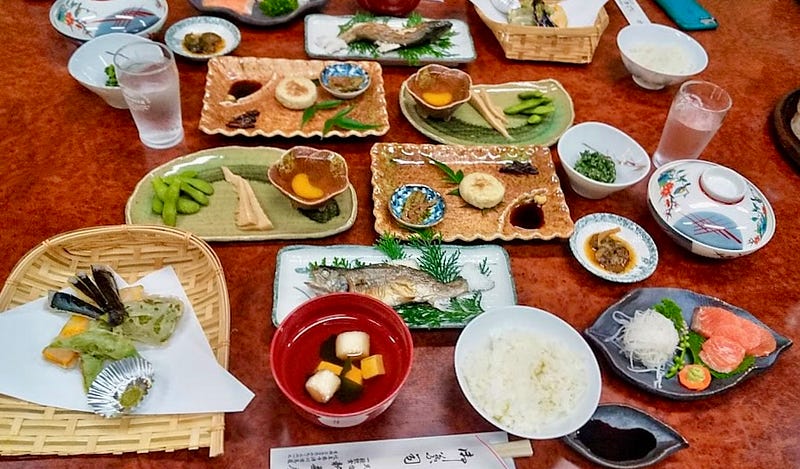
Comfortable, relaxed, and warm after soaking in the hot hinoki cypress tubs of the inn, we are ready for dinner.
A feast is laid out for us. Tempura vegetables from the owner’s garden. Pickled horsetails, bamboo shoots, and other wild vegetables. Stewed wild boar hunted by the innkeeper. Fresh fish from a nearby river. Salmon sashimi. Rice from the terraces next door. Miso soup. A locally baked bun called oyaki, made from fermented buckwheat dough wrapped around bean paste or vegetables.
And…

Crickets!
Well, they aren’t actually crickets, although they look like them. They are called inago, rice grasshoppers. Stir-fried in soy sauce, sake, and sugar, they taste… well, how shall I describe them?
Crunchy. They are crunchy.
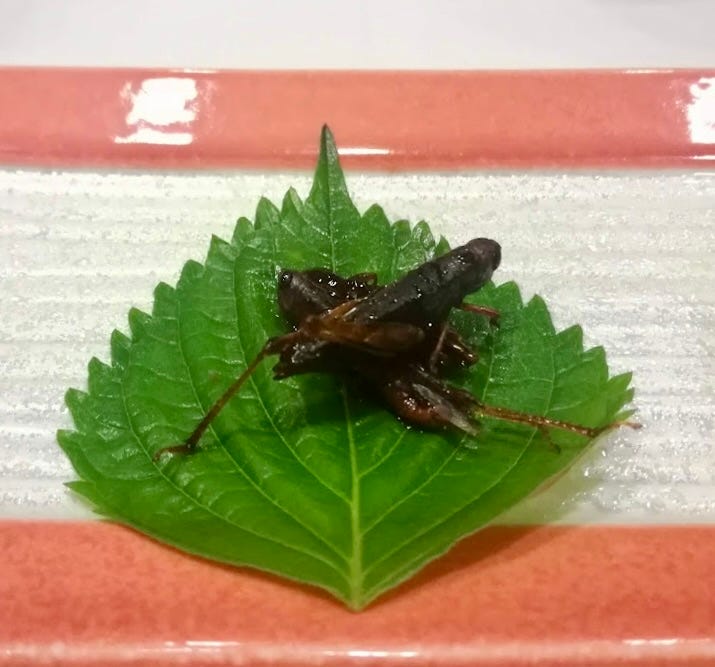
The innkeeper tells me that from his childhood he gathered inago at dawn and dusk from around his family’s rice paddies. That is when they become active and are easier to catch.
“So, did you catch these?” I ask him.
“I’m too old for that now. I buy them at the local agricultural cooperative.”
Although I am not keen on eating insects, and have politely refused to eat bee larvae served at a fancy dinner, these crunchy crickets are definitely worth trying.
Another local delicacy
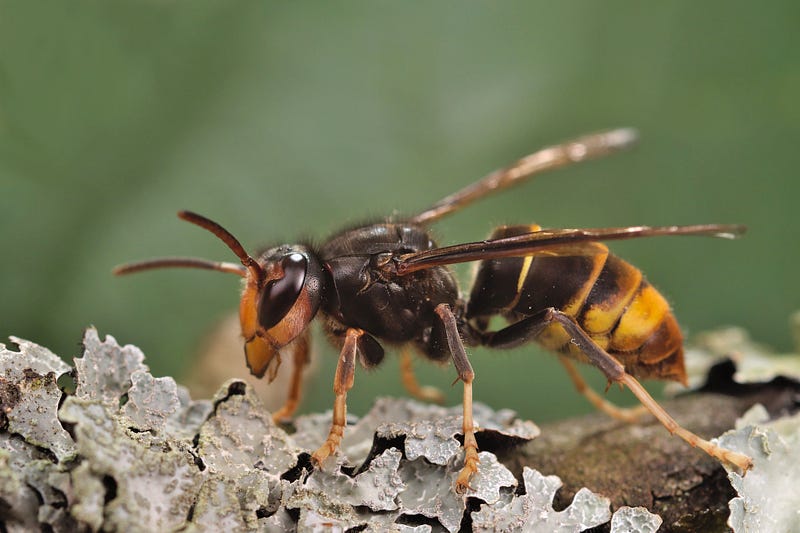
A delicacy of that region that I have not tried is the Asian giant hornet, called suzu-bachi. Warning signs along trails caution us in areas where they have been spotted. Their pack-like attacks can be lethal.
Yet according to the New York Times,
“The grubs are often preserved in jars, pan-fried or steamed with rice to make a savory dish called hebo-gohan. The adults, which can be two inches long, are fried on skewers, stinger and all, until the carapace becomes light and crunchy. They leave a warming, tingling sensation when eaten.
“The hornets can also give liquor an extra kick. Live specimens are drowned in shochu, a clear distilled beverage. In their death throes, the insects release their venom into the liquid, and it is stored until it turns a dark shade of amber.”
I think I’ll give those a hard pass.
If you have questions about Japan or suggestions for articles, please add them in the comments. For more photos and information on Japan, follow me on instagram at: https://www.instagram.com/more_than_tokyo/




